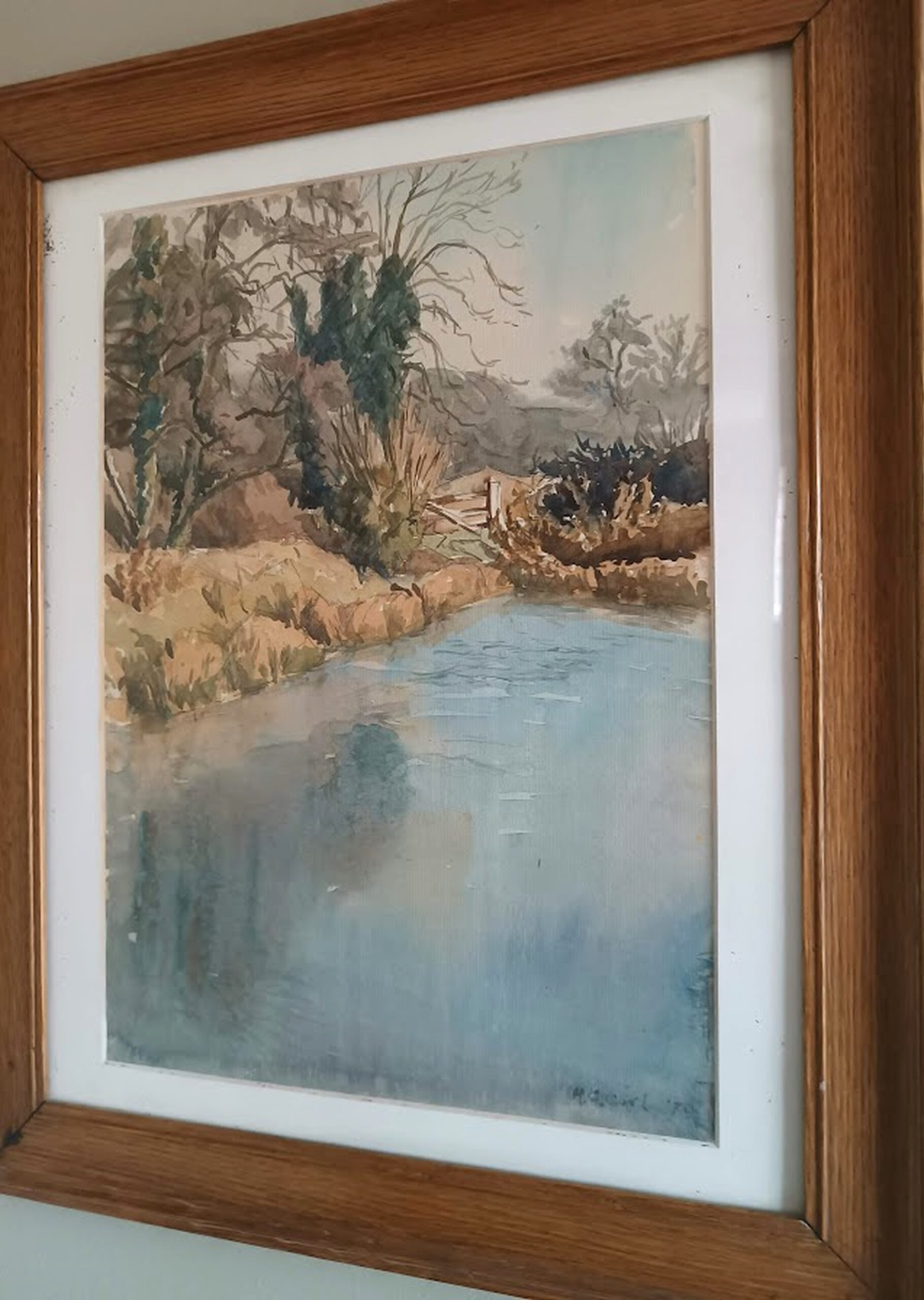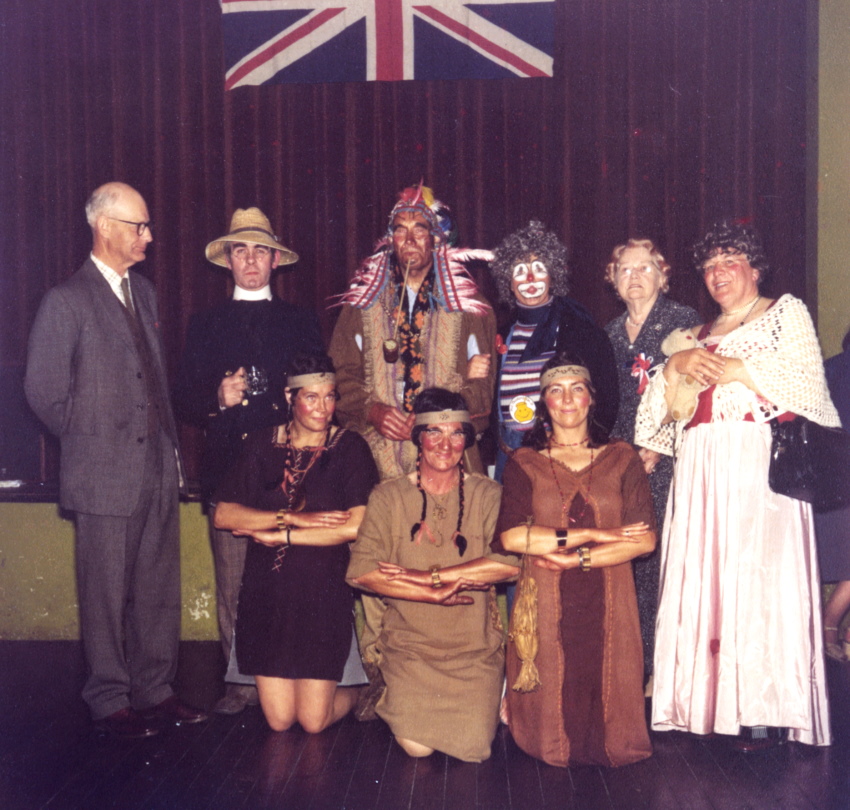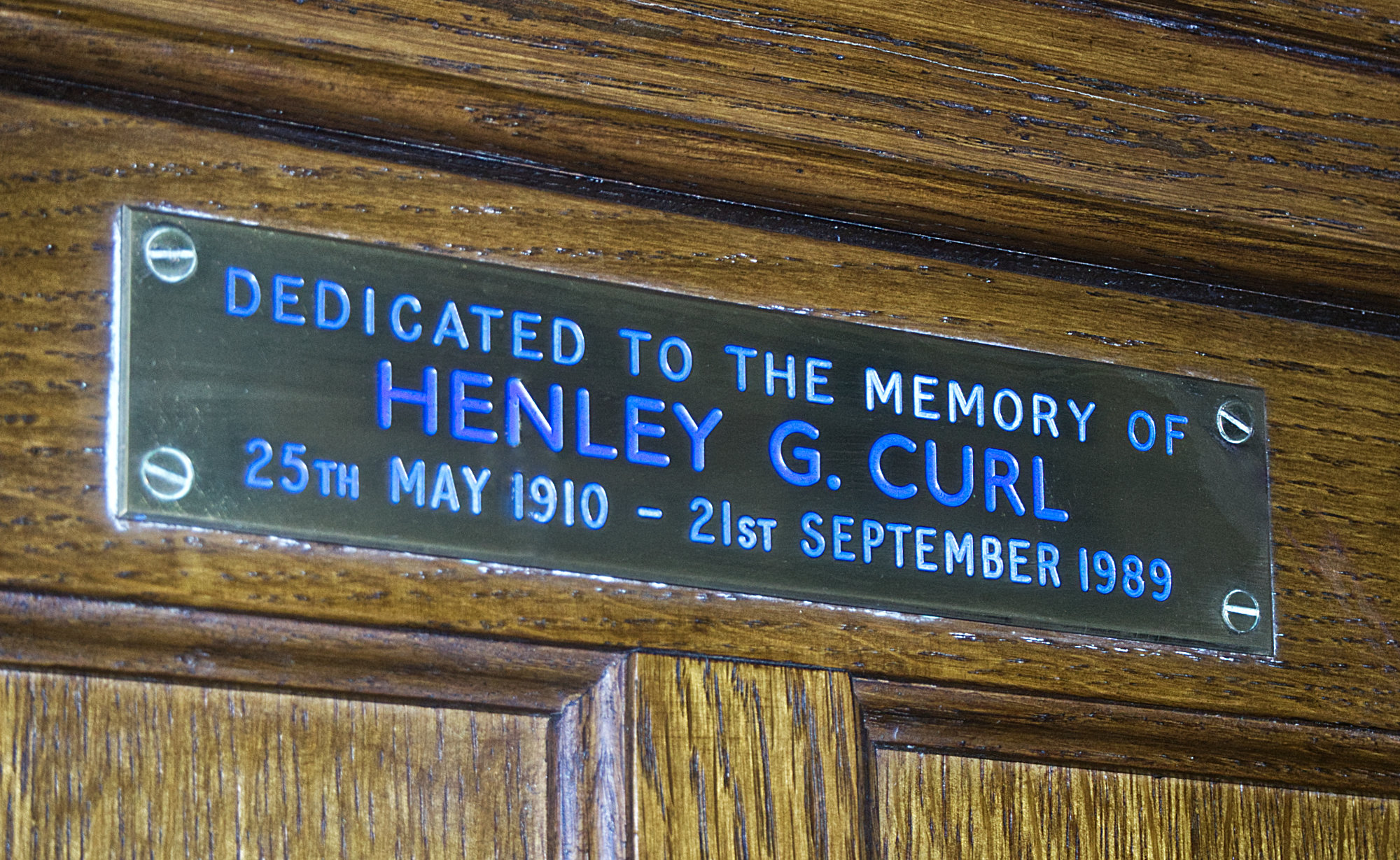
hanging on a Wreningham
wall

Henley Curl was born in Norwich in 1910. Later in life he became a Wreningham resident – living at The Homestead in Church Road.
The Curl family owned a large department store in Norwich. Raised to the ground by German bombing in 1942, it took 14 years to rebuild. The business was bought by Debenhams in the 1960s although the “Curl Brothers” name was not changed to “Debenhams” until 1973. However, Henley did not work in the family business, he had passed his law examinations in 1939 and eventually become a solicitor.
As it happened, art became one of the most significant aspects of Henley’s life. Later, in Wreningham, he was well known as a very competent artist and it was within this context he was invited to be one of the judges at the fancy dress competition during the village Silver Jubilee celebrations in 1977!
Long before this, whilst still based in Norwich, Henley Curl had received formal art training at the Cedric Morris’ East Anglian School of Painting and Drawing alongside a range of fellow students including the late and internationally famous artist Lucian Freud. There had been a dramatic episode when the art school’s original building at Dedham burnt down and the school was relocated to Benton End, a house near Hadleigh, in Suffolk – an episode confirmed to a Wreningham resident in later years. The Suffolk Artists website describes how the fire was “supposedly started accidentally by Lucian Freud who was smoking inside”. Later students of the East Anglian School of Painting and Drawing included Maggi Hambling and Joan Warburton.
In 1944, Henley had been one of the founder members of Norwich Twenty Group of artists – a group still flourishing today, and which was established to raise standards of local professional art to something worthy of the artistic history of Norfolk, by mutual criticism and appraisal of work.
In 1947, Henley had one of his pictures “St Benedict’s, Norwich” hung at the Royal Academy summer exhibition. The reference to his RA picture can be found on page 42 of the 1947 catalogue.
In his later years he gave encouragement to Wreningham’s Rachael Long – now widely known for her iconic metalwork sculptures.
In 1983, Henley is understood to have been one of the more significant benefactors in providing funds for the purchase of the village playing field from the Norwich Diocese – for the wider benefit of both the village and the school.

Following Henley’s death, in 1989, a collection of his paintings was exhibited at the Norwich Castle gallery.
